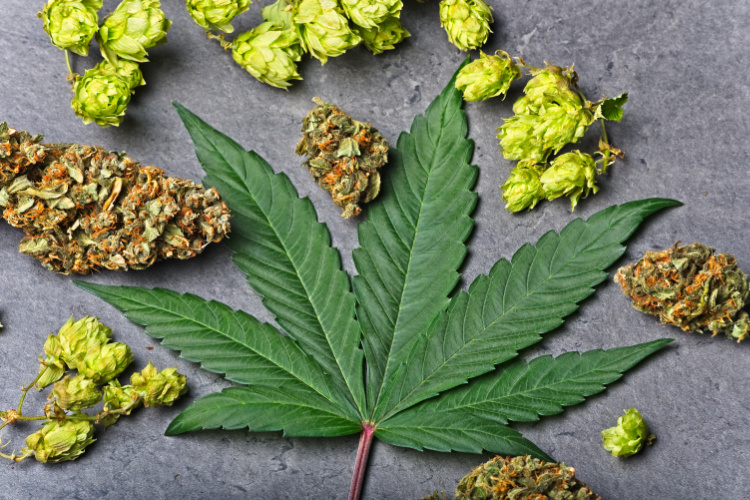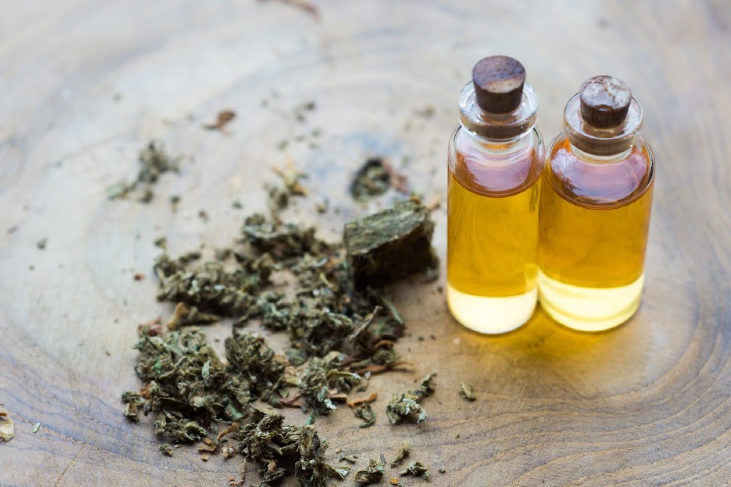Ever wonder where cannabis plants get their strain-specific flavors and aromas? You can thank terpenes for that bouquet. If you’ve been following our blog, you’ve probably become familiar with our Terpene Profile series. Next up on our list today: the hoppy, pungent terpene Humulene. We’ll also recap the relevant details about cannabis terpenes to keep it fresh.

What Are Cannabis Terpenes?
Before we dive into specifics about humulene itself, let’s zoom out and take a broad look at cannabis terpenes. Like linalool and caryophyllene, Humulene is one of the terpenes that occurs naturally in cannabis plants. So far, the scientific community has discovered more than 100 terpenes in cannabis.
Terpenes: Where Do They Come From?
Terpenes don’t only originate in cannabis plants, though. They’re actually fairly common throughout the natural world. Plants (and some animals) develop these compounds for one of two reasons.
First, they may use terpenes to attract symbiotic relationships with other animals. Flowers, for example, use terpenes to attract pollinating insects. In contrast, plants and animals may also use terpenes as deterrents to keep predators or pests away.
Some terpenes found in cannabis plants also develop in other flora. For example, you can find the terpene caryophyllene both in the Purple Punch strain and in herbs such as black pepper and oregano.

Terpenes: Effects and Uses
Terpenes can do more than just carry taste and flavor. Crafty humans have been using terpenes for centuries for a variety of reasons. For example, terpenes are a critical component of essential oils. Perfumists also make good use of terpenes to infuse powerful scents into their concoctions. Still other terpenes have industrial applications, such as additives to cleaners.
Perhaps the most interesting traits terpenes possess might be their myriad health-related possibilities. Some terpenes appear to be able to reduce swelling and inflammation. Still others demonstrate antibacterial or antifungal properties.
Terpene Profile: Humulene
With a good understanding of cannabis terpenes in general, we’re in a better position to understand one specific member of this chemical family: Humulene. Interestingly enough, humulene is actually extremely similar to the terpene caryophyllene. In fact, the two of them have all the same building blocks, but the compounds are arranged differently.
That simple difference gives humulene its own specific effects, smell, and taste.

What Does Humulene Smell and Taste Like?
If you’re a fan of the pungent, bitter aroma of a hoppy IPA, you’ll love humulene. That’s because humulene is actually responsible for those exact same flavors. Outside of cannabis, this terpene also occurs bountifully in hops.
What Effects Does Humulene Have?
Humulene has more going on than just its flavor and fragrance, though. One study suggests that this terpene may also be an effective anti-inflammatory agent. In addition, that same study concluded that humulene may also be able to regulate allergic reactions, dampening their severity. Emerging science aims to tell us a lot more about these potentially powerful properties.
Ultimately, the best way to understand how humulene (and the countless other cannabis terpenes) works for you is to try it for yourself. You can find strains containing humulene and a plethora of other cannabis terpenes available in our online store.





